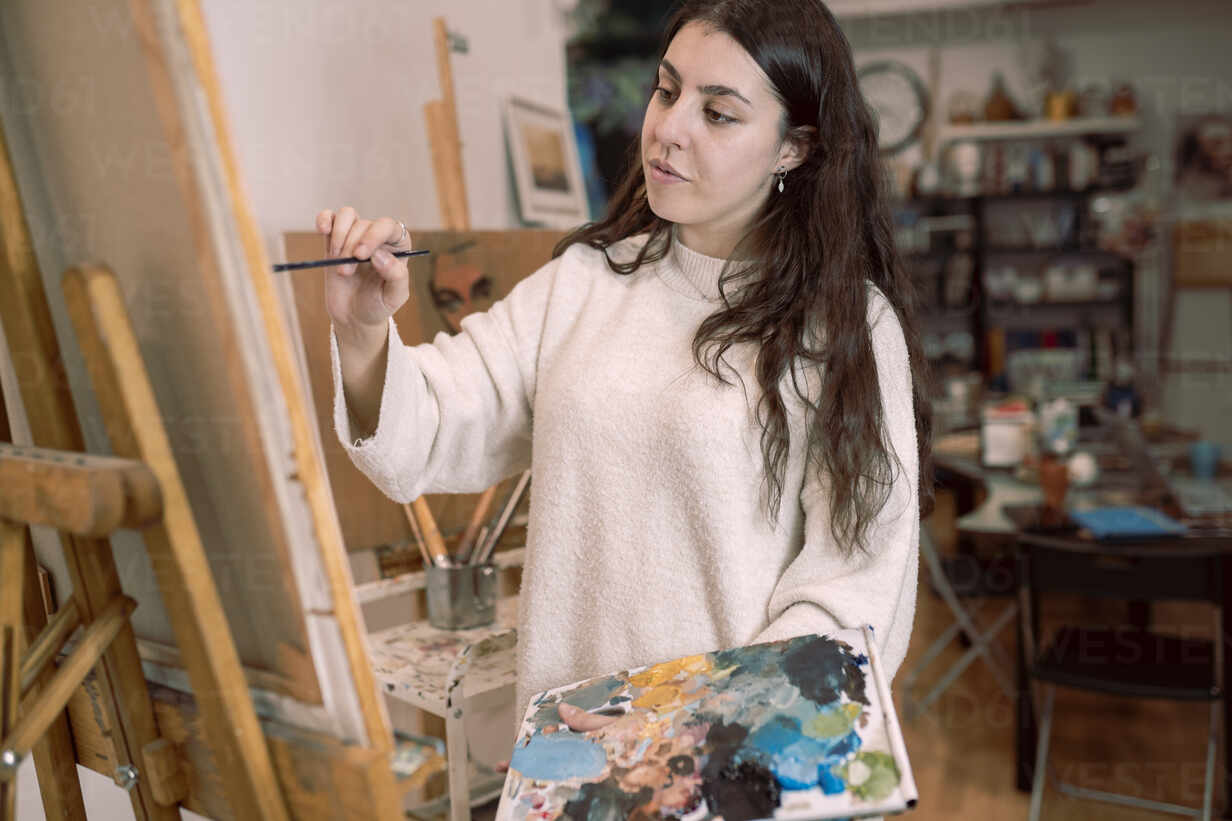Teaching Artist Jobs: Path To Success In A Thriving Field
Teaching artist jobs are an increasingly popular career choice for those who have both a passion for the arts and for teaching. By combining their love of creativity with their desire to help others, these individuals can take part in rewarding and meaningful work that makes a lasting impact on lives around them.
This article will explore what it means to be a teaching artist, how one can enter this field, and the various opportunities available within the industry.
What Is A Teaching Artist Job?
A teaching artist job is an exciting and rewarding career for someone who has a passion for the arts. It involves integrating technology, building relationships with students, and using artistic techniques to help them learn in creative ways.
Teaching artists have the unique opportunity to develop lesson plans that explore various topics through visual art, music, theater, dance or other forms of expression. Teaching artists are able to use their own knowledge and experience to design activities that push students’ boundaries while allowing them to discover new skills and passions.
In order to do this effectively, they must be adept at incorporating technology into lessons as well as developing meaningful relationships with their students. This requires patience, empathy and understanding as each student learns differently.
Many times these jobs involve preparing performances or exhibitions which can be a great way for students to express themselves by showcasing what they’ve learned during the course of their studies. For example, these could include plays written by the class or gallery showings featuring artwork created within the curriculum.
By providing such opportunities for growth, teaching artists play an essential role in helping young people make discoveries about themselves while cultivating their creativity and imagination.
Benefits Of Being A Teaching Artist
Having an understanding of what a teaching artist job is, one can see the many benefits that come with it. Being a teaching artist provides personal development in areas such as:
- Establishing and achieving artistic vision.
- Developing time management techniques to handle multiple tasks at once.
- Enhancing communication skills by working with students of all ages and backgrounds.
- Growing confidence through public speaking opportunities while leading classes and workshops.
Being a teaching artist also gives you the opportunity to share your art form with others and gain recognition for your work from peers and community members alike, contributing to professional growth within the field of art education.
Additionally, this position allows you to stay connected to both new trends in art instruction as well as established methods which have been used for centuries across cultures around the globe.
The role of a teaching artist goes beyond simply imparting knowledge about art; there are emotional connections made between teachers and their students when engaging in creative activities together.
Building these relationships boosts morale on both sides, creating unique bonds that will last long after any particular class or workshop ends.
All these advantages make being a teaching artist incredibly rewarding!
How To Find Teaching Artist Jobs?

Finding teaching artist jobs can be a challenging but rewarding process. Connecting with students and developing lesson plans are key aspects of the job, so it is important to have an understanding of how to do both in order to successfully obtain one.
It’s helpful to network with other professionals who work as teaching artists or those that may know someone hiring for such positions. Also, many art organizations post job openings online, so it’s wise to frequently check their websites during your search.
Once you’ve applied for a position, make sure to practice any skills necessary for the role ahead of time if possible. This could include practicing public speaking techniques or creating sample lesson plans to showcase your talent and style of teaching. The interview process should reflect your preparedness and confidence in taking on the responsibility of this type of job.
In addition, employers look for candidates who demonstrate they are organized and capable of maintaining records associated with their work as a teaching artist. Keeping track of student progress, attendance logs, and evaluations will all help show them you take your job seriously and understand what is expected from you in this field.
By using these tips when searching for a teaching artist job, you’ll be well-equipped to find success!
Qualifications And Skills Needed
In order to be successful in securing a teaching artist job, it is important to have certain qualifications and skills. A few of these qualities include interview techniques, lesson planning abilities, and public speaking experience.
When preparing for an interview as a potential teaching artist, having strong communication skills is essential. The interviewer will likely ask questions related to how you plan on engaging students through art activities or what methods you prefer when facilitating class discussions about artwork. Having prepared answers that demonstrate your expertise in the field can help set you apart from other candidates during interviews. Additionally, being able to effectively communicate your objectives for working with students is also beneficial.
Having the ability to create effective lesson plans is another quality needed by those wanting to become teaching artists. Lesson plans should allow enough flexibility so they can accommodate different learners while still meeting course objectives; this requires knowledge of curriculum development principles and assessment strategies.
Furthermore, knowing how to structure lessons around educational goals and standards allows teachers to develop classroom activities that are both informative and enjoyable for their students. These qualifications give prospective teaching artists the necessary tools to not only secure a position but also excel within one. With strong interviewing skills, reliable lesson planning capabilities, and confident public speaking experience under their belt, any individual looking into becoming a teaching artist has a good chance at success in reaching their goal!
Preparing For An Interview
Preparation is the key to success when seeking a teaching artist job. Before you apply, it’s important to build your confidence and develop your skills to stand out from other applicants. Here are three ways to give yourself an advantage:
- Building Confidence: Making sure that you believe in yourself can be just as effective as having experience when applying for certain positions. Visualize successful scenarios and practice interviewing with family or friends. This will help you feel more comfortable and confident during the real interview process.
- Crafting Resumes: Your resume should accurately reflect all of your qualifications, so take some time to review it before submitting applications. Read through each section and make sure nothing is outdated or missing any information about past achievements. Also, consider adding keywords relevant to the position so that employers notice your application quickly.
- Networking Opportunities: Networking with potential employers can also increase your chances of landing a job by giving them insight into who you are as a person rather than just what’s on paper. Attend conferences, workshops, and social events related to art education where hiring managers may have booths or presentations set up. Utilizing these resources not only shows initiative but could potentially lead to better opportunities down the road!
Overall, preparing for an interview takes time and effort but following these tips can help ensure that you land your dream teaching artist job!
Setting Up Your Teaching Space
Creating a successful teaching space is essential for any artist looking to provide an educational experience. From finding resources and creating structure, to connecting with students, the setup of your teaching area can have huge implications on the success of your program and overall student engagement.
When it comes to setting up your teaching environment, having access to necessary materials and supplies is key. Finding creative ways to source these materials on a budget can be challenging at times but there are several options available today that make this task much easier.
For example, many schools or organizations offer grants or scholarships that could help cover some costs associated with securing supplies. Additionally, local businesses may also be willing to donate items such as art paper or other classroom necessities that you would otherwise need to purchase out-of-pocket.
The next step in establishing your teaching space is designing a layout that works best for both yourself and clients alike. Creating structure within the space helps keep everyone organized and engaged throughout the duration of class time. It’s important when setting up classroom areas that you consider factors like lighting, ventilation, noise levels, furniture placement and storage so each lesson runs smoothly without distraction from outside elements.
Once everything has been properly arranged according to plan then it’s time to start introducing yourself and getting comfortable interacting with students – which will ultimately lead into learning more about their backgrounds and interests as well as exploring new ideas together through artistic expression!
All in all, taking time upfront to think through every detail involved in preparing a suitable learning atmosphere for teaching artists can go a long way toward making sure each session is productive yet entertaining – allowing everyone involved to get the most out of their experience while developing skills they’ll carry far beyond the walls of the classroom.
Making Your Lessons Engaging

No matter the artistic field, it is essential when teaching artist jobs to make lessons engaging. Doing so helps foster an atmosphere of trust between students and teachers while also helping with classroom management. Thus, there are a few key steps to consider when constructing lesson plans:
- Incorporate activities that spark creativity in your students – let them express themselves through their art form!
- Make sure you establish clear expectations from the start; this will help alleviate any confusion or misunderstanding throughout the class.
- Be prepared for disruption and have strategies on hand for how to handle it if needed.
- Keep track of student engagement by having them participate often in group discussions or small projects during class time.
In order to ensure successful learning outcomes, always remember these tips: engage students actively, build trust between teacher and student relationships, and create effective classroom management techniques. With these goals in mind, creating engaging lesson plans becomes much easier!
Tips For Starting Your Teaching Artist Career
Now that you know how to make your lessons engaging, it’s time to focus on tips for starting your teaching artist career.
Networking is a key component of getting started in the field. It can be an invaluable resource when connecting with potential employers or learning about new opportunities. Attending conferences and workshops related to your area of expertise, joining online groups dedicated to teaching artists, and seeking out mentors are all great ways to build networks and gain knowledge about the industry.
Time management skills are also essential for success as a teaching artist. You will need to manage multiple projects at once while ensuring that each one meets deadlines. Additionally, developing systems for tracking assignments and organizing curriculum materials can help you stay organized throughout the process.
Finally, strong classroom management techniques such as setting expectations prior to class commencing, creating clear rules and procedures, introducing yourself to students at the beginning of each session, and providing consistent feedback are important elements of successful lesson planning.
Therefore, taking the necessary steps towards launching a career in this field requires dedication and commitment but can be incredibly rewarding both professionally and personally. With thoughtful preparation, networking opportunities available within the community, understanding of effective time management strategies, and successful classroom management methods – individuals interested in pursuing work as a teaching artist have everything they need to kickstart their journey!
Conclusion
Finding a teaching artist job can be challenging, but with the right experience and qualifications it’s possible to land the perfect position. Generally speaking, the pay for these jobs is competitive and varies depending on location and employer. It may take some time to find an opening that meets your needs, so having patience and staying informed about available opportunities are key.
Overall, becoming a teaching artist requires dedication and hard work. But if you’re passionate about this field of work, you’ll have plenty of chances to make a living doing something that you love!







